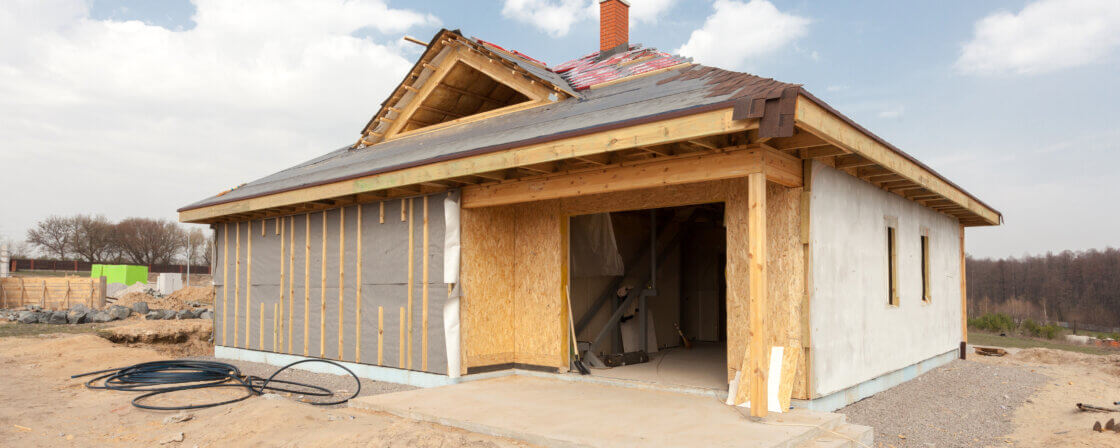What replaced the planning consent?
From 1 July 2024, building authorities will no longer issue planning consent. The new Building Act No. 283/2021 has introduced a single procedure for the authorisation of a project, which merges the previously separate steps – i.e. the zoning decision, the planning consent and the building permit – into a single administrative process.
This procedure is common to all types of construction, and is differentiated only according to the complexity of the project (i.e. small, simple, reserved, other construction). The aim is to simplify and speed up the permitting process by having the builder submit one application, the building authority conduct one procedure and issue one decision – the planning permission.
This permit also includes an assessment of the conformity of the building with the zoning plan, public interests and technical requirements for construction.
How to apply for planning permission – step by step
There are clear rules for applying for planning permission. First, check that your development is in accordance with the development plan and that it is not in a conservation area or buffer zone that would require further consent or opinion. The application itself is submitted to the relevant building authority or online via the Builder’s Portal.
The application must include in particular:
- identification details of the builder,
- a description of the project and its location (including the parcel number of the land concerned),
- details of ownership or other rights to the land,
- project documentation for the authorisation of the project,
- where applicable, statements or binding opinions of the authorities concerned, if required.
An important part of the annexes are the simplified project documentation, any consents of neighbours and opinions of the authorities concerned, if required. After submission, the authority will verify the completeness of the documentation and assess whether the project can be permitted. If all the conditions are met, a decision is issued.
Are you solving a similar problem?
Do you plan to build?
Don’t forget the contract for the work. We will make sure that the creation and delivery of the work is legally free of any ambiguities, unreasonable risks and hidden pitfalls. We will prepare a bulletproof contract for you in just 3 days.
I want to consult
- When you order, you know what you will get and how much it will cost.
- We handle everything online or in person at one of our 6 offices.
- We handle 8 out of 10 requests within 2 working days.
- We have specialists for every field of law.
Tip for article
Building supervision is expensive, but it is definitely worth it. It controls the quality of materials and the progress of construction work. This ensures that everything goes according to plan. If you plan to build with your own hands, you can’t avoid it. In this case, the presence of a building supervisor is required by law. In our article, we looked at what exactly a building supervisor does, how much it costs and how to choose the best one.
How long before you get a decision?
The time it takes for the building authority to decide on your project depends on the complexity of the project and the category of building.
For simple buildings (for example, small garages, swimming pools, greenhouses or extensions), the building authority will make a decision within 30 days of receiving a complete application for planning permission.
For more complex or reserved buildings, this time limit can be longer, up to 60 days.
The deadline may be extended, for example, if the authority calls for missing documents to be completed, if the opinions of the authorities concerned have to be obtained or if a public hearing is required. In such cases, the decision may be delayed by a further 30 days (up to a maximum of 60 days in proceedings with a large number of parties).
It is therefore worthwhile to pay sufficient attention to the preparation of the application and to attach all the necessary supporting documents the first time. The more complete the documentation the building authority receives, the quicker it will decide on the project.
The most common mistakes made by applicants and how to avoid them
One of the most common mistakes is the incorrect determination of the type of construction and the associated incorrect procedure for applying for a permit. The new Building Act distinguishes categories of buildings according to their complexity (small, simple, reserved and other) and sets different requirements for documentation and the permitting process for each of them. If you make a mistake, you risk delays and fines.
Incomplete applications are also a common problem – missing project documentation, outdated title documents or unclearly described plans. The building authority then has to ask the applicant to complete it, which prolongs the whole process. We therefore recommend that you study the requirements carefully and attach all the necessary documents the first time.
Also pay attention to the consent of neighbours and the opinions of the authorities concerned – they are not always required, but if they are missing according to the law, the building authority may reject the application.
Finally, starting construction without a valid planning permission is a serious breach of the law. It can lead to an order to remove the building or to a fine.
Tip for article
Tip: Do you need to submit a proposal for entry into the Land Registry? Leave it to us! We will help you with the drafting so that everything is in order the first time and you don’t miss important deadlines or lose money.
Summary
The new Building Act brings a long-awaited simplification for builders. Instead of the former planning consent and building permit, there is now a single planning permission procedure that combines all the former steps into one process. In addition, in simpler cases, the accelerated procedure can be used if the builder provides all the necessary consents and opinions when submitting the application. Before you start building, check what procedure applies to your project and whether it is in accordance with the zoning plan. Prepare complete documentation, including all attachments, and make sure that all information is up to date. The more accurate and complete the documents the building authority receives, the quicker it can make a decision on the project. You can also use the Builder’s Portal, which allows you to submit your application electronically and track the progress of the procedure. If you are unsure whether you have got everything right, consult a professional – the investment in legal or technical advice can pay you back many times over.

